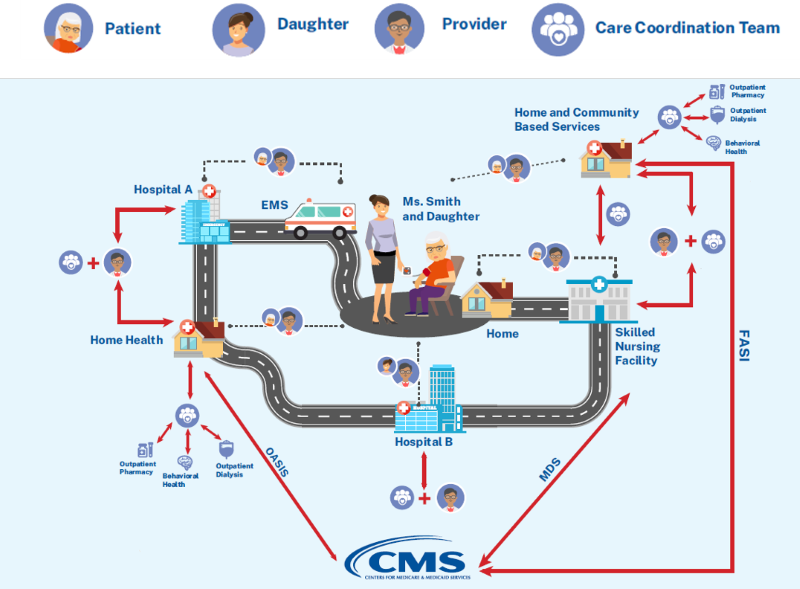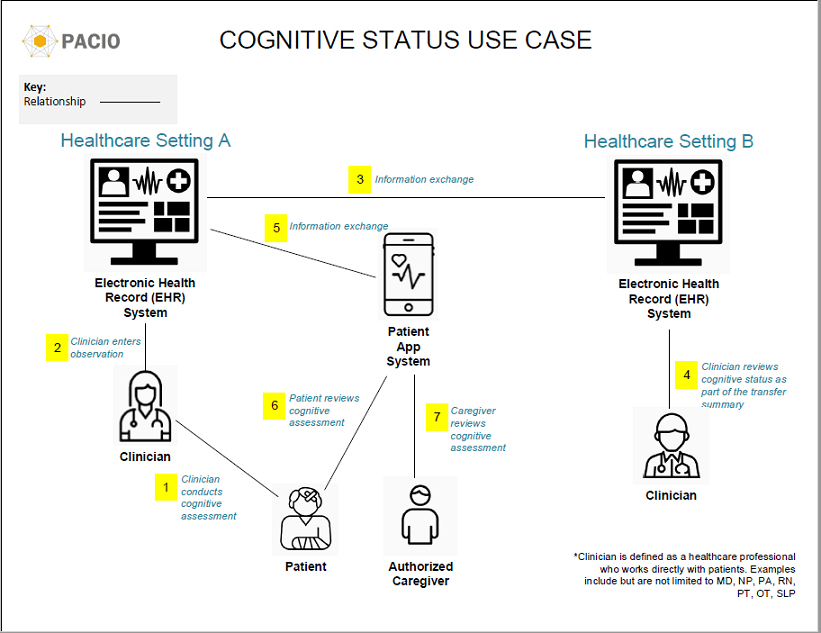This page is part of the PACIO Cognitive Status Implementation Guide (v0.1.0: STU 1 Ballot 1) based on FHIR R4. The current version which supercedes this version is 1.0.0. For a full list of available versions, see the Directory of published versions 
Post-acute care patients are typically complex from a healthcare perspective and have many stops during their healthcare journey (as shown in Figure 1). As the patient moves from one healthcare setting to another, it is important that their cognitive data travel with them so that the new healthcare setting has the most complete information about that patient so they can provide the best care.
The below example uses the following Post-Acute Care assessments:

Figure 1: Example Post-acute Care Patient Healthcare Journey
In Figure 2, the patient is admitted to Healthcare Setting A due to the result of an adverse event, such as a stroke. Healthcare setting A performs a set of Confusion Assessment Method (CAM) cognitive assessments, first by a registered nurse (e.g. at admission) and later, by a physical therapist (e.g. at discharge). The results of the CAM cognitive assessments are captured in the electronic health record (EHR) system of Healthcare Setting A.
Upon discharge, Healthcare Setting A refers the patient to Healthcare Setting B. When the patient arrives at Healthcare Setting B, their clinicians can retrieve the cognitive assessments performed on the patient at Healthcare Setting A, as part of the transfer summary, using the profiles for exchanging cognitive status data defined in this Implementation Guide.
The patient and their family can also access the assessments from Healthcare Setting A at any time through a mobile/web application, so that they are informed about the patient’s care, can track progress, and can be more engaged in their healthcare decisions.

Figure 2: Cognitive Status Use Case